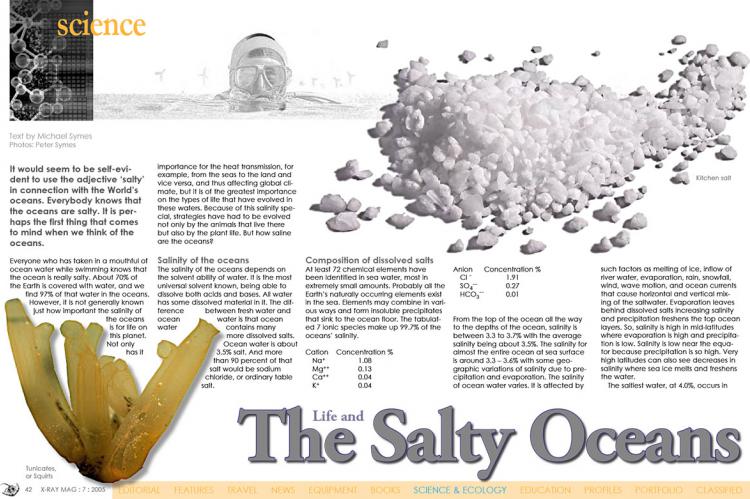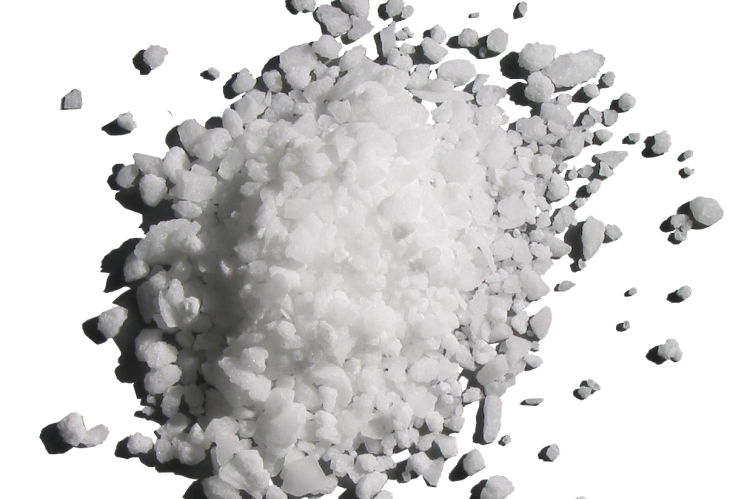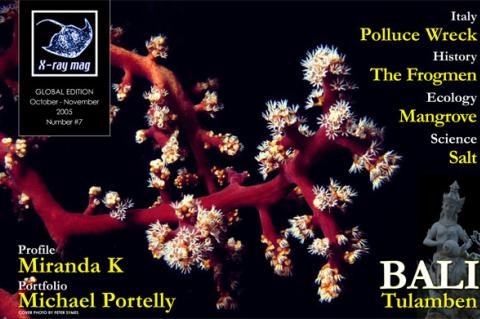Salty Oceans
It would seem to be self-evident to use the adjective ‘salty’ in connection with the World’s oceans. Everybody knows that the oceans are salty. It is perhaps the first thing that comes to mind when we think of the oceans.
Tags & Taxonomy
Not only has it importance for the heat transmission, for example, from the seas to the land and vice versa, and thus affecting global climate, but it is of the greatest importance on the types of life that have evolved in these waters. Because of this salinity special, strategies have had to be evolved not only by the animals that live there but also by the plant life. But how saline are the oceans?
Salinity of the oceans
The salinity of the oceans depends on the solvent ability of water. It is the most universal solvent known, being able to dissolve both acids and bases. All water has some dissolved material in it. The difference between fresh water and ocean water is that ocean water contains many more dissolved salts. Ocean water is about 3.5% salt. And more than 90 percent of that salt would be sodium chloride, or ordinary table salt.
Composition of dissolved salts
At least 72 chemical elements have been identified in sea water, most in extremely small amounts. Probably all the Earth’s naturally occurring elements exist in the sea. Elements may combine in various ways and form insoluble precipitates that sink to the ocean floor. The tabulated 7 ionic species make up 99.7% of the oceans’ salinity.
Cation Concentration %
Na+ 1.08
Mg++ 0.13
Ca++ 0.04
K+ 0.04
Anion Concentration %
Cl - 1.91
SO4-- 0.27
HCO3-- 0.01
From the top of the ocean all the way to the depths of the ocean, salinity is between 3.3 to 3.7% with the average salinity being about 3.5%. The salinity for almost the entire ocean at sea surface is around 3.3 – 3.6% with some geographic variations of salinity due to precipitation and evaporation. The salinity of ocean water varies. It is affected by such factors as melting of ice, inflow of river water, evaporation, rain, snowfall, wind, wave motion, and ocean currents that cause horizontal and vertical mixing of the saltwater.
Evaporation leaves behind dissolved salts increasing salinity and precipitation freshens the top ocean layers. So, salinity is high in mid-latitudes where evaporation is high and precipitation is low. Salinity is low near the equator because precipitation is so high. Very high latitudes can also see decreases in salinity where sea ice melts and freshens the water.
( ... )
Download the full article ⬇︎

Originally published
X-Ray Mag #7
BALI - visiting Tulamben. Science: Salt of the sea. Conservation: Mangrove. Polluce wreck. The first frogment. The Techni-sub story. Royal Tasmania. Portfolio: A tribute to Michael Portelly. Technical matters: Going solo or not? Photography: Manipulation? Ecology: Anemone city Profile: Miranda Krestovnikoff. Science: Drinking seawater



